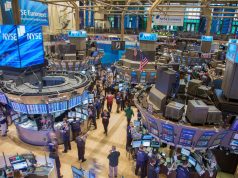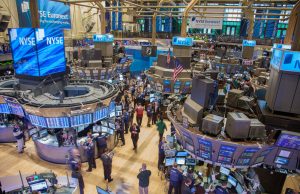Bear Watch Weekly: Stocks to Sideline Now
The right stocks can make you rich and change your life.
The wrong stocks, though… They can do a whole lot more than just “underperform.” If only! They can eviscerate your wealth, bleeding out your hard-won profits.
They’re pure portfolio poison.
Surprisingly, not many investors want to talk about this. You certainly don’t hear about the danger in the mainstream media – until it’s too late.
That’s not to suggest they’re obscure companies – some of the “toxic stocks” I’m going to name for you are in fact regularly in the headlines for other reasons, often in glowing terms.
I’m going to run down the list and give you the chance to learn the names of three companies I think everyone should own instead.
But first, if you own any or all of these “toxic stocks,” sell them today…
Bank of America (NYSE: BAC)
Warren Buffett, the legendary investor known for his long-term buy-and-hold strategy, has recently raised significant concerns about Bank of America. His decision to offload approximately $9 billion in shares since mid-July serves as a strong indicator of his dwindling confidence in the bank’s future prospects. Historically, Buffett is slow to sell, often sticking with investments for decades unless he perceives a fundamental change in a company’s competitive advantage. This latest move suggests that even the “Oracle of Omaha” may see troubling signs in Bank of America’s operational landscape.
Buffett’s initial investment in Bank of America back in 2011 was intended to bolster confidence in the troubled lender, but the recent context has shifted dramatically. As he continues to divest from various banking stocks, including JPMorgan and Goldman Sachs, it raises questions about the overall health of the banking sector. His comments regarding the confusion among American banking consumers and the potential for future bank failures highlight a cautionary stance that should not be overlooked by investors.
The landscape for banks has become increasingly complex, especially after the high-profile collapses of Silicon Valley Bank and Signature Bank. The ensuing regulatory responses and the evolving dynamics of consumer trust have made the banking environment more uncertain than ever. With digitalization and fintech transforming how customers interact with banks, the stability of deposits has come under scrutiny, leading to an erosion of confidence.
In light of Buffett’s recent actions and comments, now may be the time to reconsider your position in Bank of America. If one of the most respected investors is selling, it’s a signal worth heeding. It might be prudent to avoid or sell this stock as the future remains uncertain and the risks associated with banking stocks appear to be increasing.
Chipotle Mexican Grill, Inc. (NYSE: CMG)
Chipotle Mexican Grill (CMG) reported third-quarter earnings, delivering earnings per share (EPS) of $0.27, slightly surpassing analysts’ expectations of $0.25. The company also achieved a 13% year-over-year revenue increase, reaching $2.79 billion.
However, the company’s forward guidance raised concerns. Management indicated that comparable restaurant sales growth for the full year would be in the mid to high single digits, below the anticipated 7.5% growth expected by analysts. Additionally, Chipotle plans to open fewer new stores than previously projected, signaling a slowdown in its expansion strategy.
At its current valuation, trading at over 40 times 2025 expected earnings, Chipotle appears overvalued, especially given the recent guidance indicating slower growth. Following the earnings call, the stock declined nearly 8%, though it has since recovered some ground. Given the high valuation and the company’s tempered growth outlook, investors may want to exercise caution with Chipotle’s stock at this time.
MetLife Inc. (NYSE: MET)
Lastly, let’s talk about MetLife Inc. After their earnings report, it seems that now might not be the best time to hold onto this stock. While they posted a net income of $1.3 billion, or $1.81 per share, which looks great compared to last year’s $422 million, the investment thesis looks grim for this company.
The real kick-in-the-pants that came during the earnings call were details from the group benefits segment, which covers everything from dental and disability to life insurance. They saw adjusted earnings in this area fall by a whopping 27% to $373 million. This decline was attributed to a mix of weaker underwriting performance and an annual actuarial assumption review. When a company’s core business starts to falter like this, it raises some red flags.
On the investment side, MetLife reported lower variable income in the third quarter, although net investment income did rise to $5.2 billion—an 8% increase from last year. This growth was largely driven by higher interest rates, but let’s be real; these conditions won’t last forever.
Even after dropping almost 8% following the earnings call, MetLife’s shares are still trading at about 15 times Morningstar’s estimated fair market value. That’s a sign of overvaluation, especially in a market where underwriting conditions have been favorable but are starting to shift. As those conditions normalize, we could see underwriting premiums contract, which could hurt MetLife and other insurance stocks.
Given these insights, it might be wise to reconsider your position in MetLife. With the combination of disappointing guidance and overvaluation, now could be a good time to sell and look for better opportunities elsewhere.













